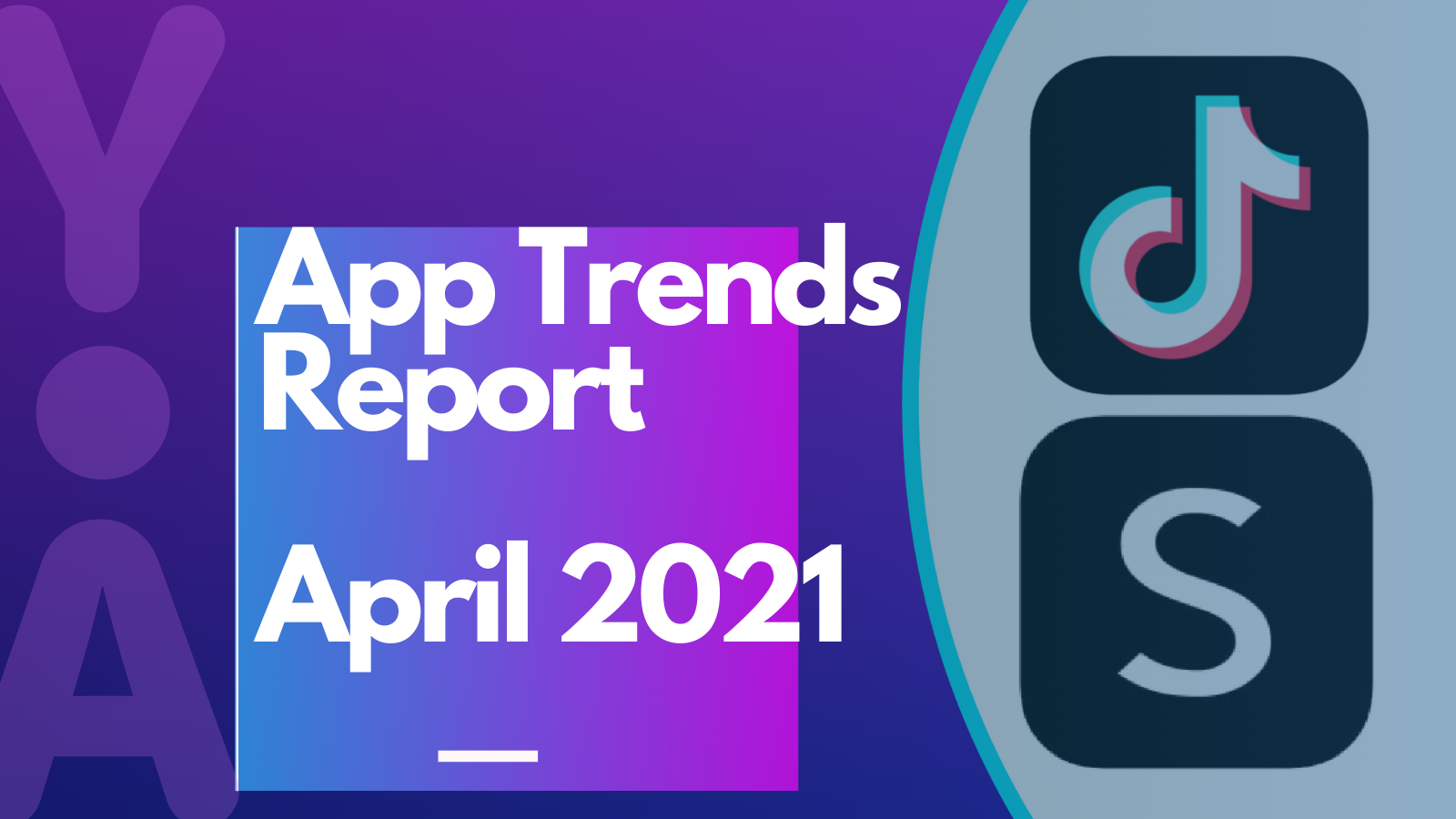Welcome to another installment of our Pulse on Current App Trends report! In this report we’re reviewing breakout apps, including the fast fashion app, SHEIN, and mobile gaming trends.
The Rise of Fast Fashion
With the rise of social media, the idea of the #fashionhaul has gained popularity. This includes the rise of short styling videos in which influencers try on clothes and style the latest trends. These minute-long styling videos became even more popular during quarantine. Consumers found online shopping as a source of comfort and video platforms like TikTok saw record growth.
Fast fashion market value forecast worldwide in 2009 and 2019, with a forecast for 2029 (in billion U.S. dollars)*
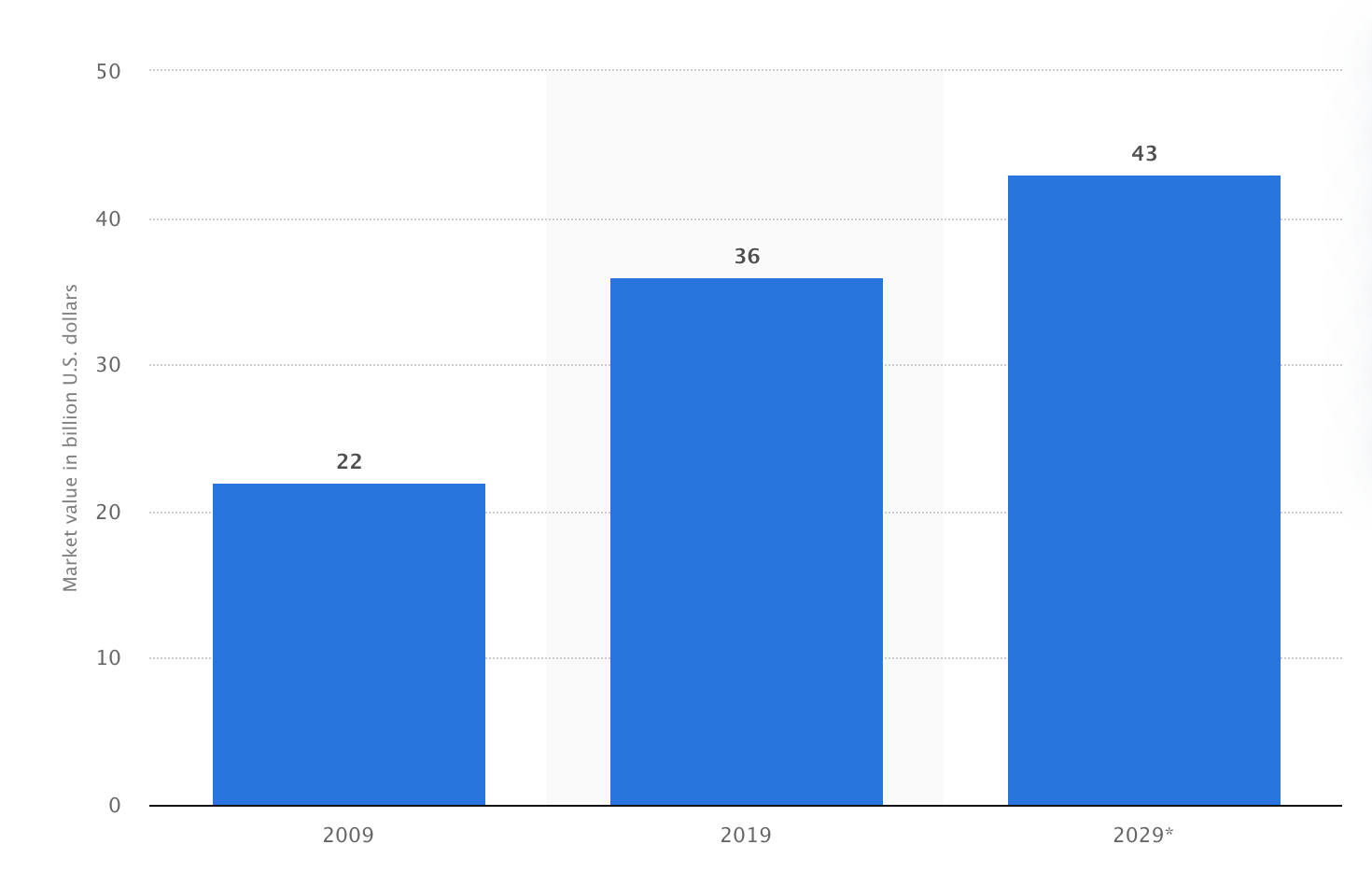
Source: Statista
While the fast fashion industry is expected to decline in 2020 due to the economic slowdown caused by the COVID-19 pandemic, the market is expected to recover in 2023. Projections forecast the fast fashion market will be valued at $43 billion by 2029. While brands like Zara and H&M are well-known players in the fast fashion market, their apps are less so.
Top App: SHEIN
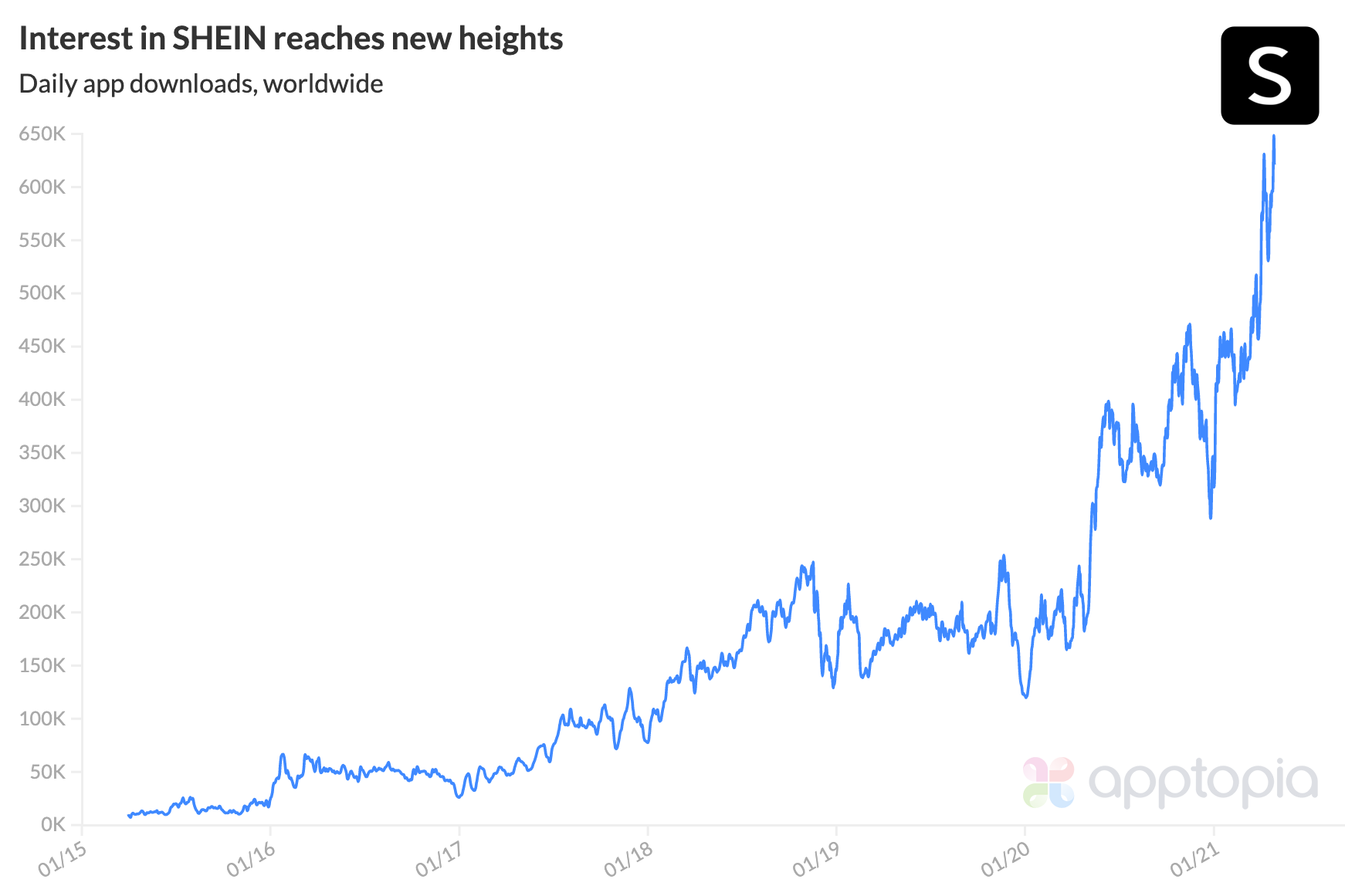
Source: Apptopia
For the past several years, the SHEIN app has ranked as the top performing fast fashion app. In fact the app holds a 50% share of the fast fashion app market. April marked a particular high for SHEIN with the app generating 649,000 downloads in one day and reaching 22M DAU for the first time. This represents a 239.8% YoY increase in daily downloads and 175% YoY increase in DAU.
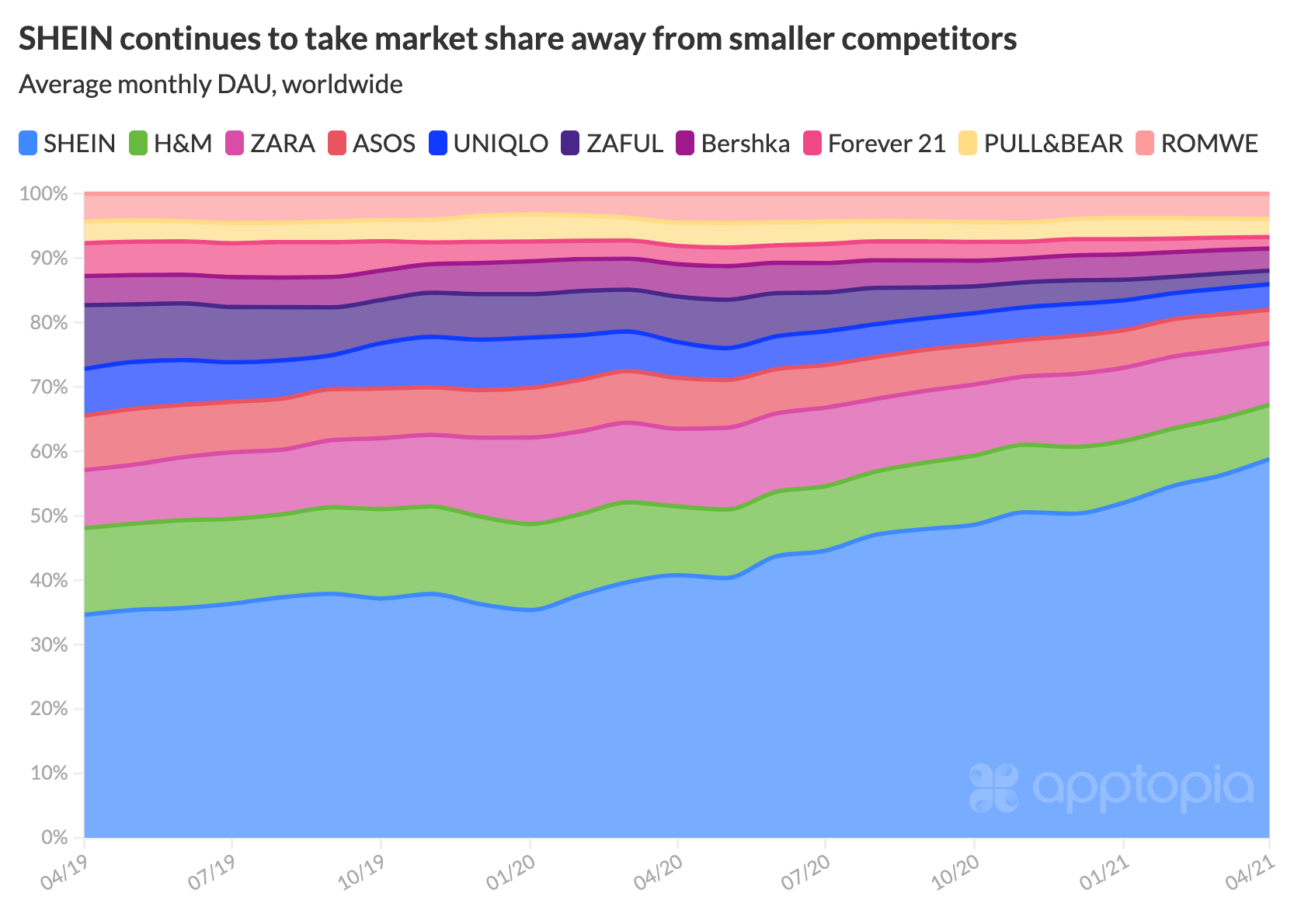
Source: Apptopia
What Apps Can Learn from the SHEIN App
SHEIN’s growth serves as a reminder of the power of social media and influencer marketing-based strategies. Paid and unpaid influencers alike tout the brand's name and show off their latest SHEIN hauls, making #SHEINHaul a trending hashtag. This focus on content has helped SHEIN reach 80%+ share of voice for relevant terms like “clothes,” “women's clothing,” and “women's fashion”. The brand has further raised its profile by advertising for its competitors’ names so that it will show up even when consumers search for another brand. SHEIN also capitalizes on celebrity to get people to use its app. This includes cementing partnerships with celebrities like Katy Perry, Lil Nas X, and Nick Jonas.
Finally, and perhaps most importantly, what sets SHEIN apart from other fast fashion apps is its focus on building community. The app live streams star-studded events like SHEIN Together Fest, offers styling recommendations, and partners with indie fashion designers through SHEIN X. These efforts have built an active fashion creator community around the SHEIN app which, in turn, has driven long-term growth.
What can apps learn from SHEIN? Invest in social media, organic content and building a creator community around your product.
Trends to Watch: IDFA Changes & Market Consolidation
In April, Apple finally implemented its long-awaited App Tracking Transparency (ATT) framework. Going forward with iOS 14.5, all apps submitted to the App Store must be ready to support this framework by asking users if they would like to opt-in to sharing their IDFA.
These app trends have resulted in numerous mergers and acquisitions to consolidate resources in the face of changes. In February 2021, mobile ad platform and games publisher, Applovin, acquired mobile advertising attribution company, Adjust. Strategically, this provided Applovin’s ad network and ever-growing games portfolio, Lion Studios, with an attribution mechanism. This move to full stack consolidation will allow Applovin to not just offer mobile ad space to publishers but the attribution of installs too.
Similarly, Zynga’s April 2021 acquisition of in-app growth and mobile monetization platform, Chartboost, shows a strategic move into ad tech from the opposite direction. Zynga is a major game developer with its own first-party data. As such, the acquisition of an ad tech company that serves and supplies mobile ads, will allow Zynga to leverage its first-party data for a full ad tech stack.
What Apps Need to Know
In the face of restricted access to the IDFA, the IDFV serves as an alternative for validating installs when a user has been cross-promoted between apps in the same portfolio. As such, major gaming app companies with ever-growing portfolios of titles that also include a fully-owned, proprietary attribution stack would be particularly valuable in a post-iOS 14.5 world.
As more and more mobile gaming companies become ad tech companies to hasten this competitive advantage, app marketers should keep watch of potential opportunities and alternatives to the IDFA. This includes emerging ad networks with cross-promotion capabilities that utilize the IDFV.
A Note on ATT Opt-In Prompts
There is likely more room to get creative with your ATT opt-in prompt than you realize. If you need ideas on unique ways to communicate to your users why sharing their IDFA will benefit their experience, refer to examples for inspiration.
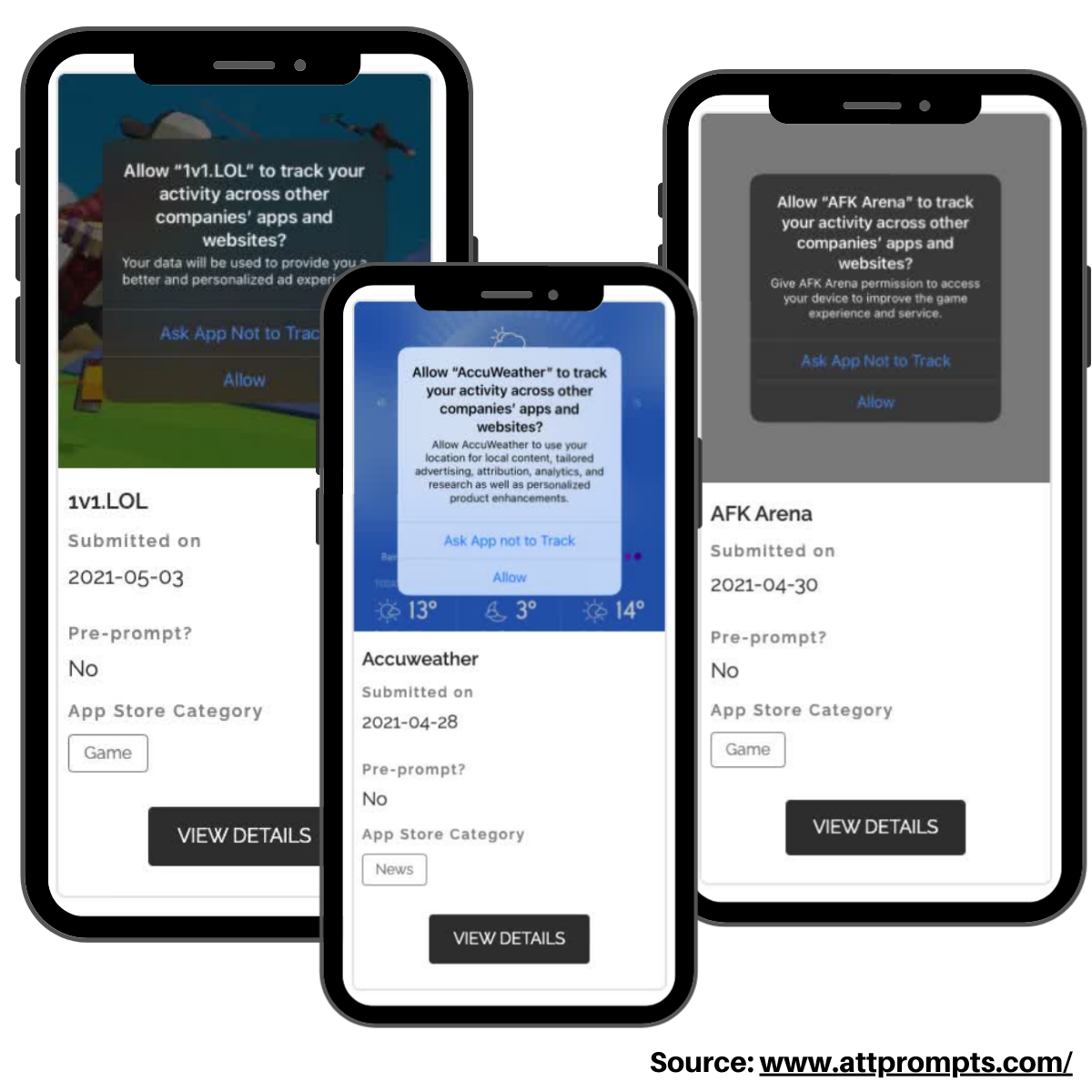
Remember: apps only have one chance to show users the ATT opt-in prompt. This increases the potential impact of providing more information about opting in via pre-permission prompts. Pre-permission prompts have been found to achieve a 65% opt-in rate when integrated in a new user onboarding flow. Consider adding an IDFA pre-permission prompt to a special “data privacy” screen of your new user onboarding flow. This will not only add a more natural feel to the information you provide users but also allow you to tackle other data privacy policies on a broader level, such as GDPR.
Top Apps
In April 2021, TikTok remained the most downloaded non-gaming app worldwide with 59 million installs. Brazil drove the largest amount of installs (13%). Closely following Brazil was China driving 12% of installs.
Facebook was the second most installed non-gaming app with more than 53 million installs. The countries with the largest number of Facebook installs were India at 26%, followed by the United States at 7%.
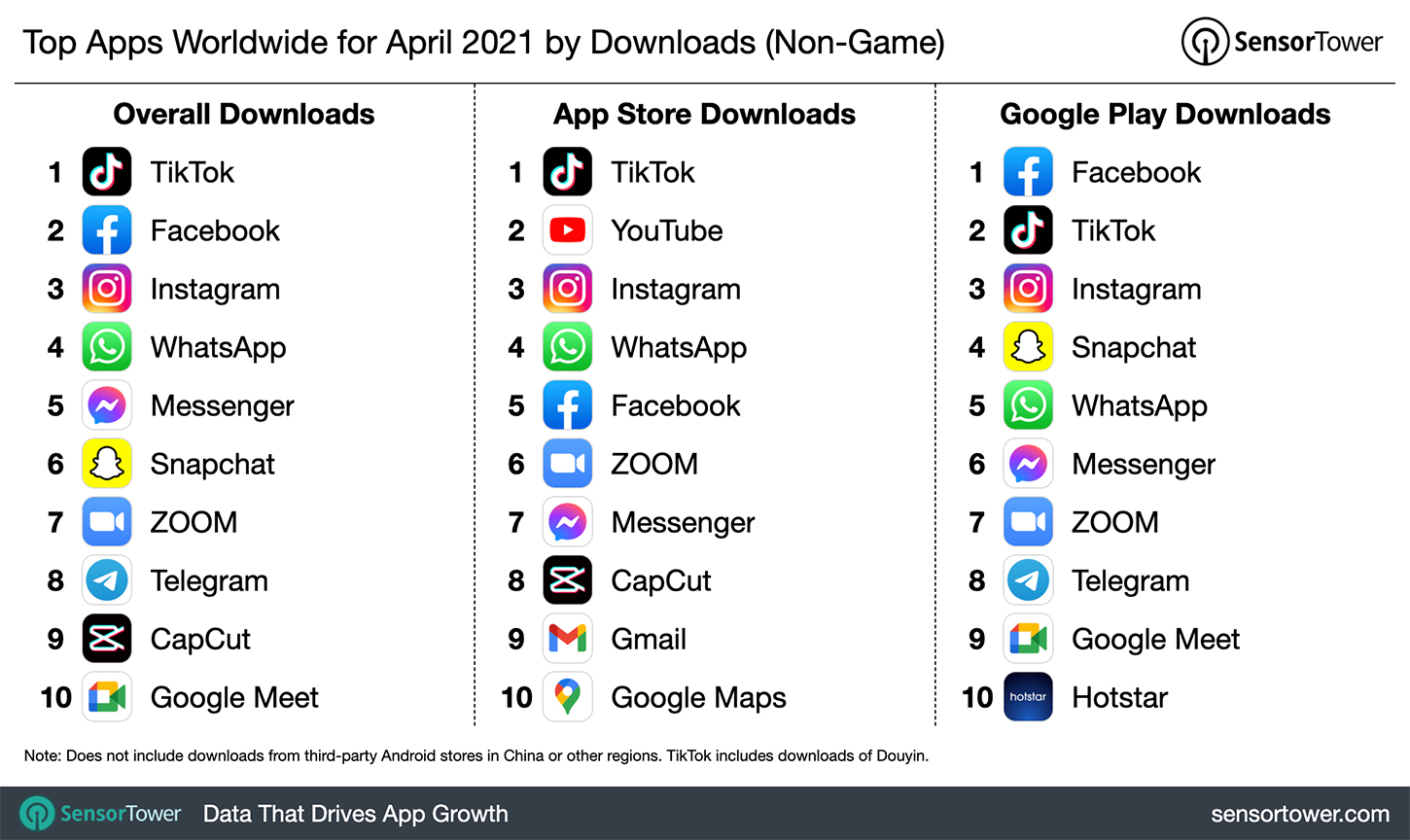
Source: Sensor Tower
Takeaways
April 2021 app trends saw the high growth of fast fashion app, SHEIN, and mobile market consolidation in the face of iOS data tracking changes.
- SHEIN reached record daily installs and DAU in April. The fast fashion app’s sustained growth serves as a case study of the impact of social media, influencer marketing and community content strategies on sustained growth.
- In April, Apple finally implemented its long-awaited App Tracking Transparency (ATT) framework. Data privacy app trends have resulted in numerous mergers and acquisitions as mobile industry leaders seek to consolidate their resources. App marketers should keep watch of potential opportunities and alternatives to the IDFA. This includes emerging ad networks with cross-promotion capabilities that utilize the IDFV.
- In April 2021, TikTok remained the most downloaded non-gaming app worldwide with 59 million installs. Facebook was the second most installed non-gaming app with more than 53 million installs.
